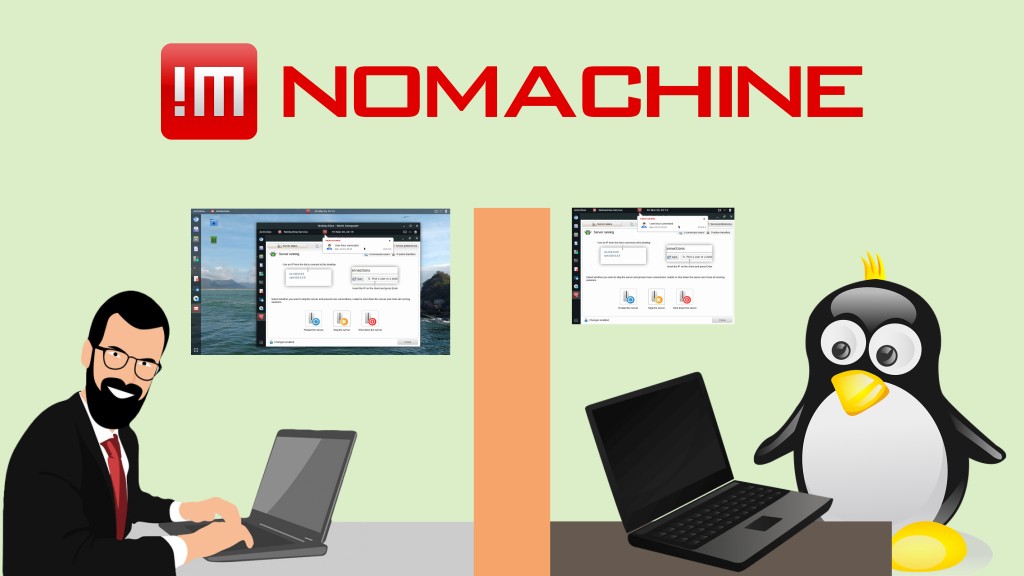

- Nomachine remote machine credentials how to#
- Nomachine remote machine credentials zip file#
- Nomachine remote machine credentials mod#
- Nomachine remote machine credentials zip#
- Nomachine remote machine credentials crack#


Within this debug-users.txt file, we find an interesting output. Proxychains impacket-smbclient -k -no-pass To accomplish this, we can either use the Nmap binary or run this one-liner to determine which ports are currently open: Active DirectoryĪfter discovering another IP address at 192.168.0.2, our next task was to enumerate the open ports on that machine. Let’s now explore ways to enumerate Active Directory.
Nomachine remote machine credentials how to#
Further research on how to use a ticket in Linux led me to ksu, which essentially functions like su but with Kerberos support.īy using these commands, we can elevate our privileges to root on this container and obtain the user flag. After confirming that this machine is related to Active Directory and dealing with Kerberos-related issues, we can request and cache a ticket via kinit. We are now on the same web server host with persistence enabled. I was stuck here for a while because I was trying to log in to SSH with just “ray.duncan”, but then I realized that we need to log in with the domain name, like this: (yes, that’s his username) The other database files contained references to a domain called The KDC (and therefore DC) of this machine was found to be at 192.168.0.2. Now that we possess some credentials, performing additional enumeration on the files exposes the presence of other networks on this machine
Nomachine remote machine credentials zip#
So, I decided to transfer the file back to my machine and use ‘7z l -slt’ to scrutinize the technical details of the zip file.
Nomachine remote machine credentials crack#
Despite my attempts to crack the hash, I couldn’t make any headway.
Nomachine remote machine credentials zip file#
I was struck by how peculiar it was to come across a random zip file here. Additionally, there are numerous other files related to Active Directory, including GPOs and Kerberos configurations. I found that backup.zip interesting,But when attempting to unzip it, we noticed that the file is password-protected and contains the /etc/passwd file. This discovery confirms that there are multiple hosts with different operating systems on this box, likely related to Active Directory. I managed to retrieve a shell using this method as a webster user after sending this request.Īlthough this machine was intended to run on Windows, I found myself in a Linux host, which was very strange. This additional information would allow the cookie to pass through, and we included it in the final request sent via Burpsuite. To bypass ModSec and enable the RCE to work, we needed to add something to the end of the cookie. We can encode it by using Burp Suite like so : Specifically, we can leverage nodejsshell.py to generate a shell, and then use base64 to encode it. To create a payload, we can follow the tutorial provided in the article. It suggests that there may be a deserialization exploit in play, and that ModSec could be a key factor related to the use of cookies. Upon investigating potential vulnerabilities related to cookies and Express, I came across an informative article at exploiting-node-js-deserialization-bug-for-remote-code-execution.
Nomachine remote machine credentials mod#
The article explains how the use of a second equals sign within the cookie parameter may result in a DoS condition with Mod Security.įrom the website’s architecture, it appears to be built on the Express framework. READ MORE HERE : modsecurity-vulnerability-cve-2019-19886

Further investigation into Mod Security’s cookie-related exploits unearthed several informative articles, including this one: ModSec appears to be the WAF employed to safeguard this webpage, which seems peculiar. I encountered an error while attempting to fuzz the login page using SQL Injection payloads. It appeared as a JWT token, but it was not actually a profile cookie: Furthermore, the website utilized Express as its backend framework, which could assist in identifying potential vulnerabilities related to these cookies Bypassing ModSec (RCE) As I proxied the traffic, I stumbled upon an intriguing cookie. Therefore, I decided to use Burp Suite to inspect the background activity. I didn’t find anything interesting on this page. Luckly,I attempted to login with admin:admin, and it worked! Website : Ī login page greets us at the new domain: Let’s add that to the /etc/hosts file and enumerate there. Ffuf -w /usr/share/seclists/Discovery/DNS/subdomains-top1million-5000.txt -u -H "Host: /" -fw 3


 0 kommentar(er)
0 kommentar(er)
